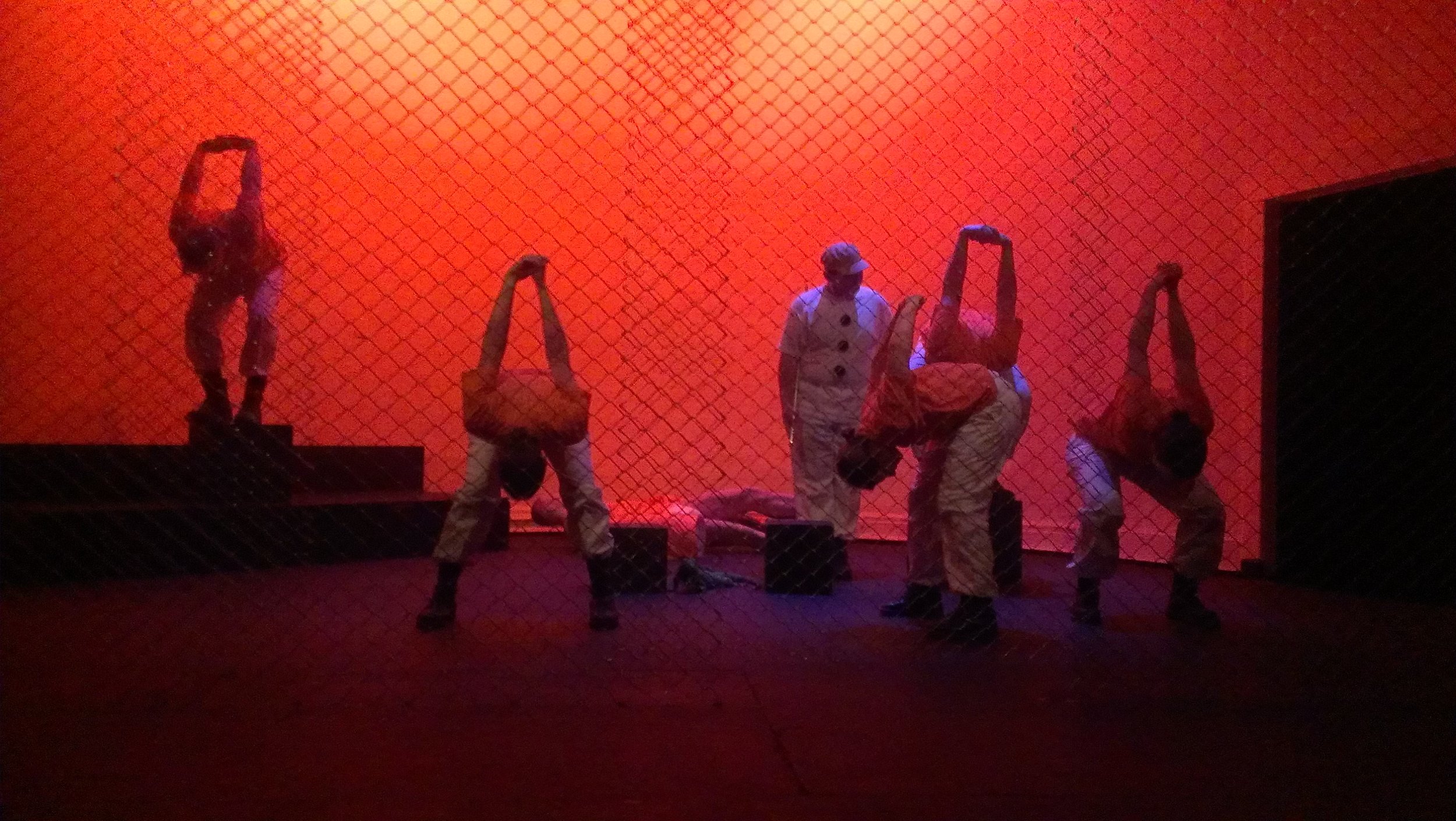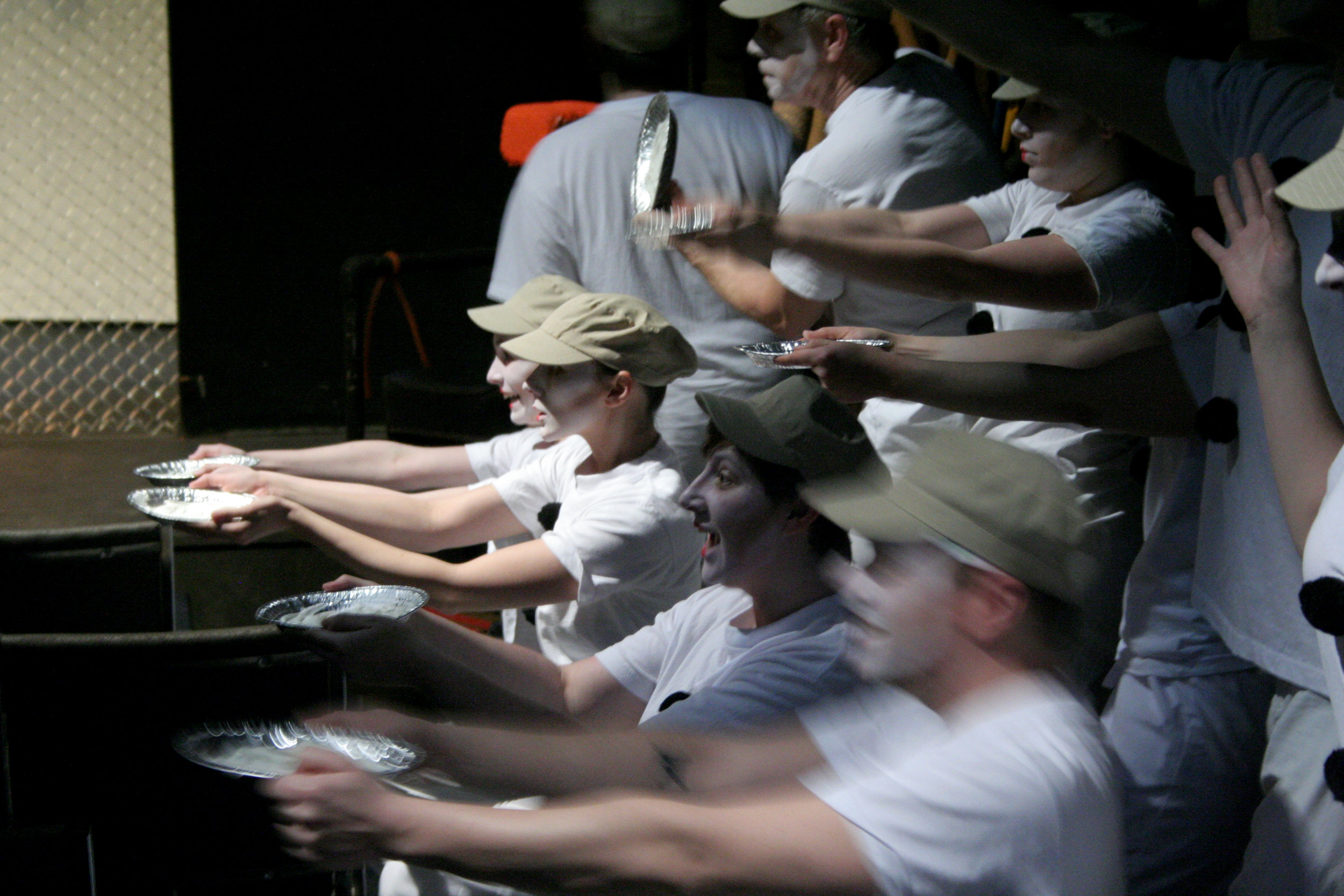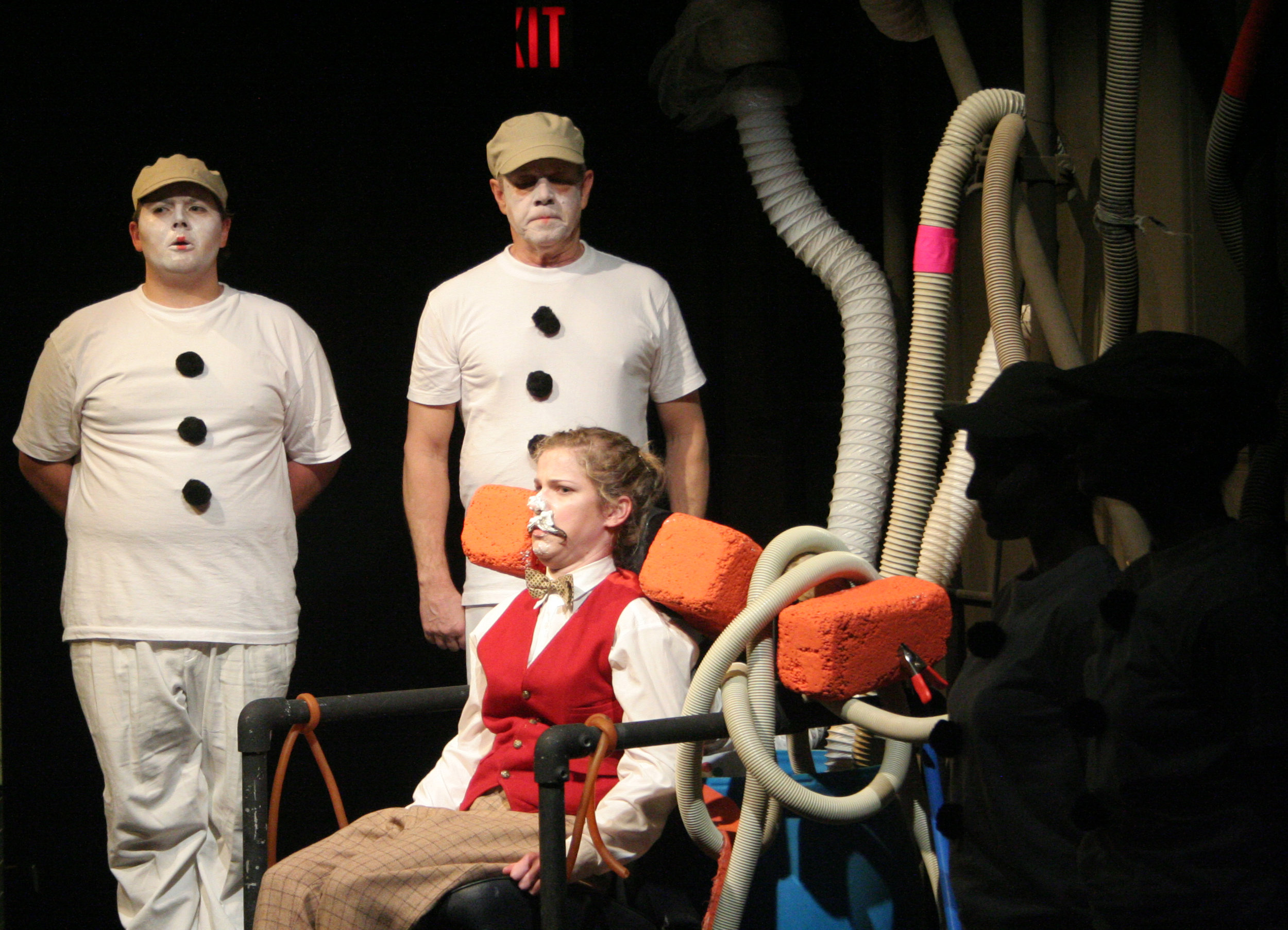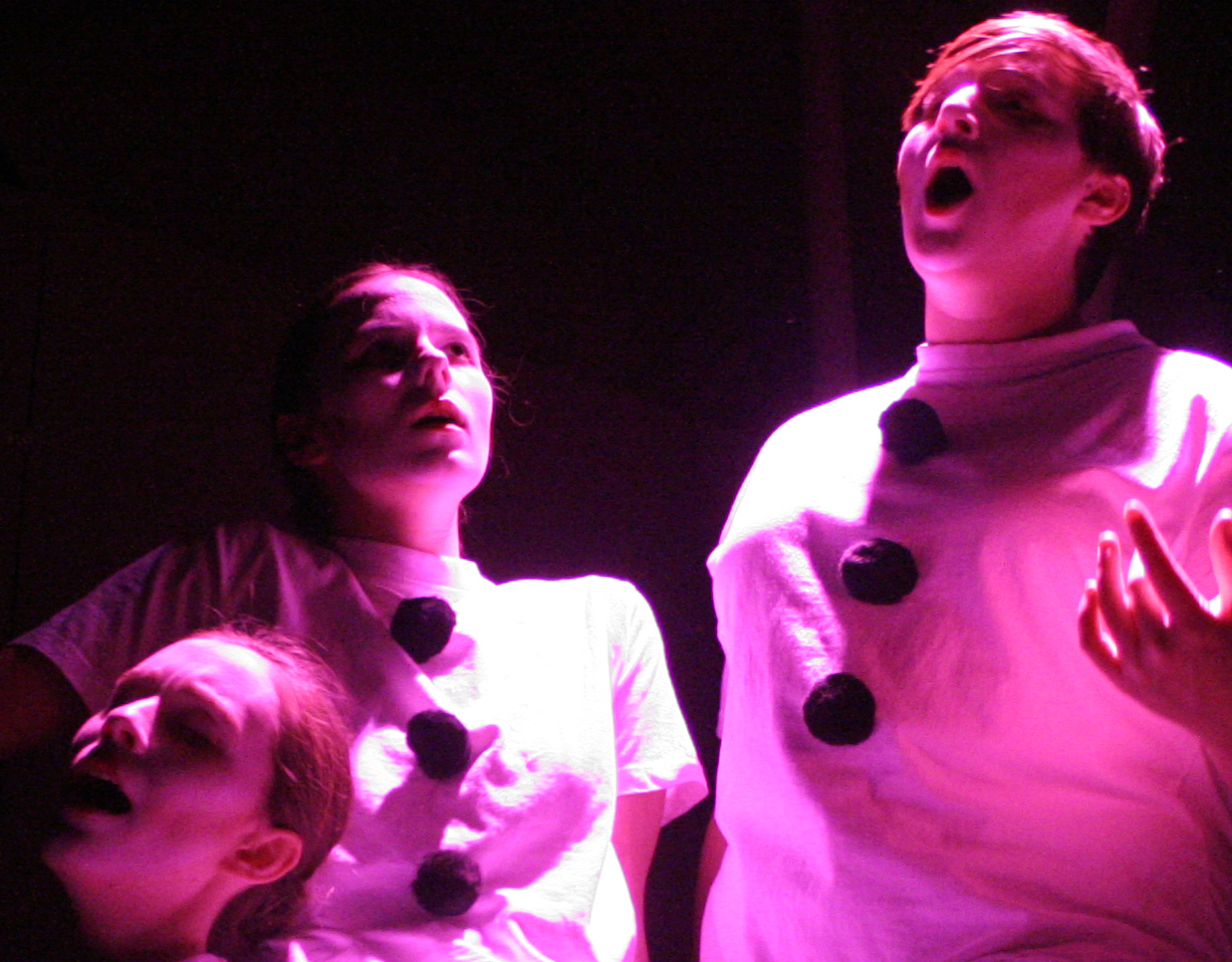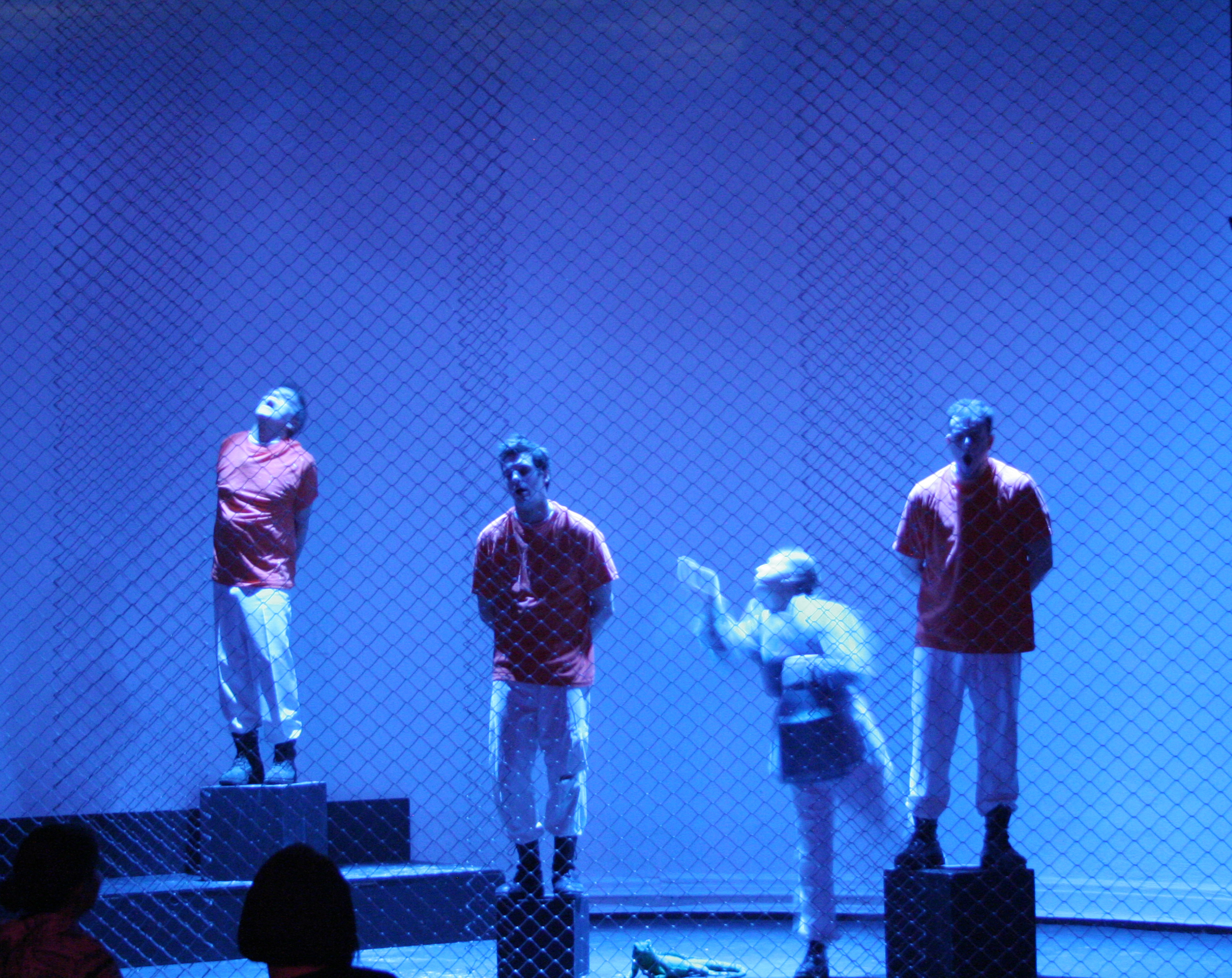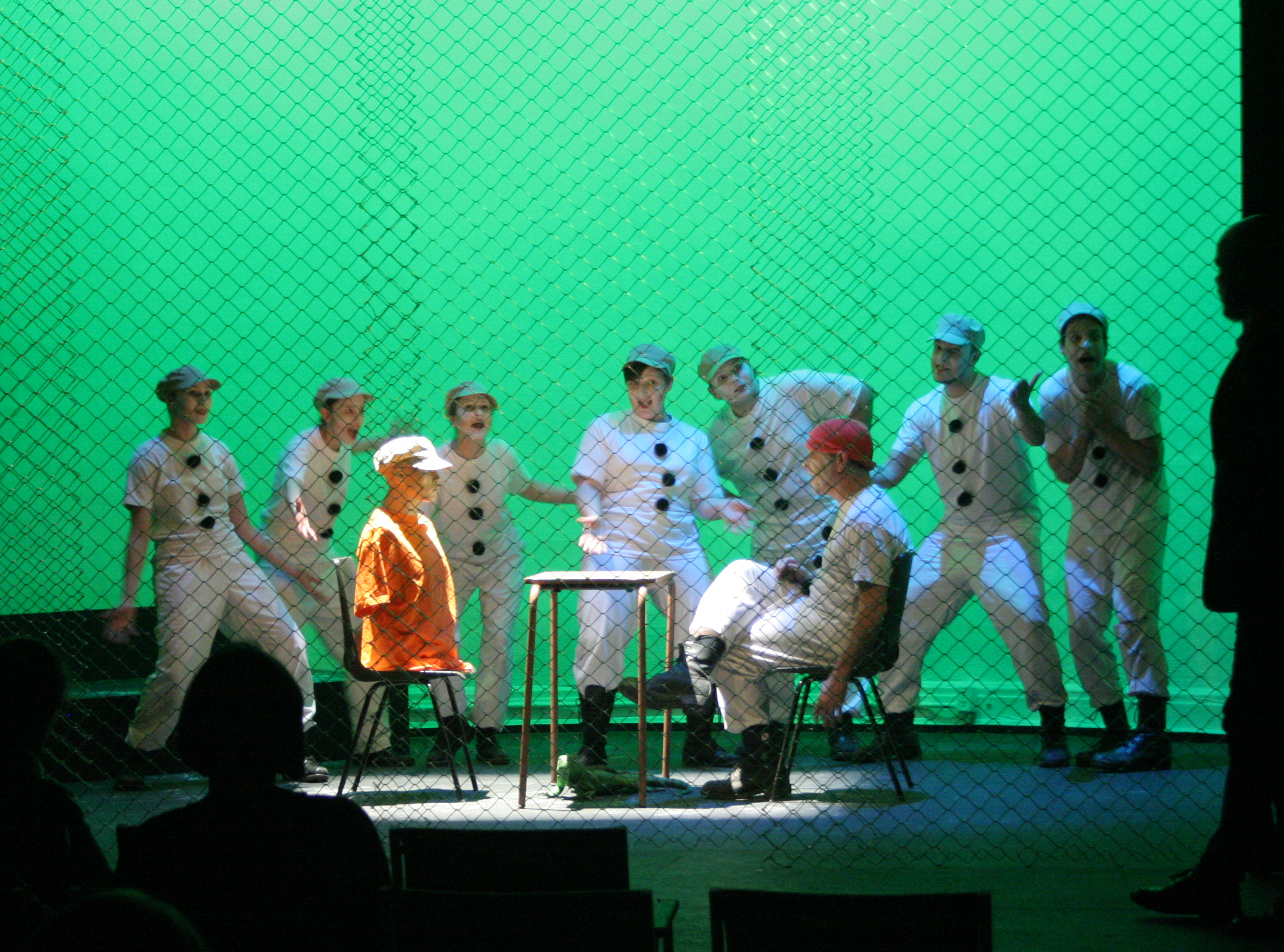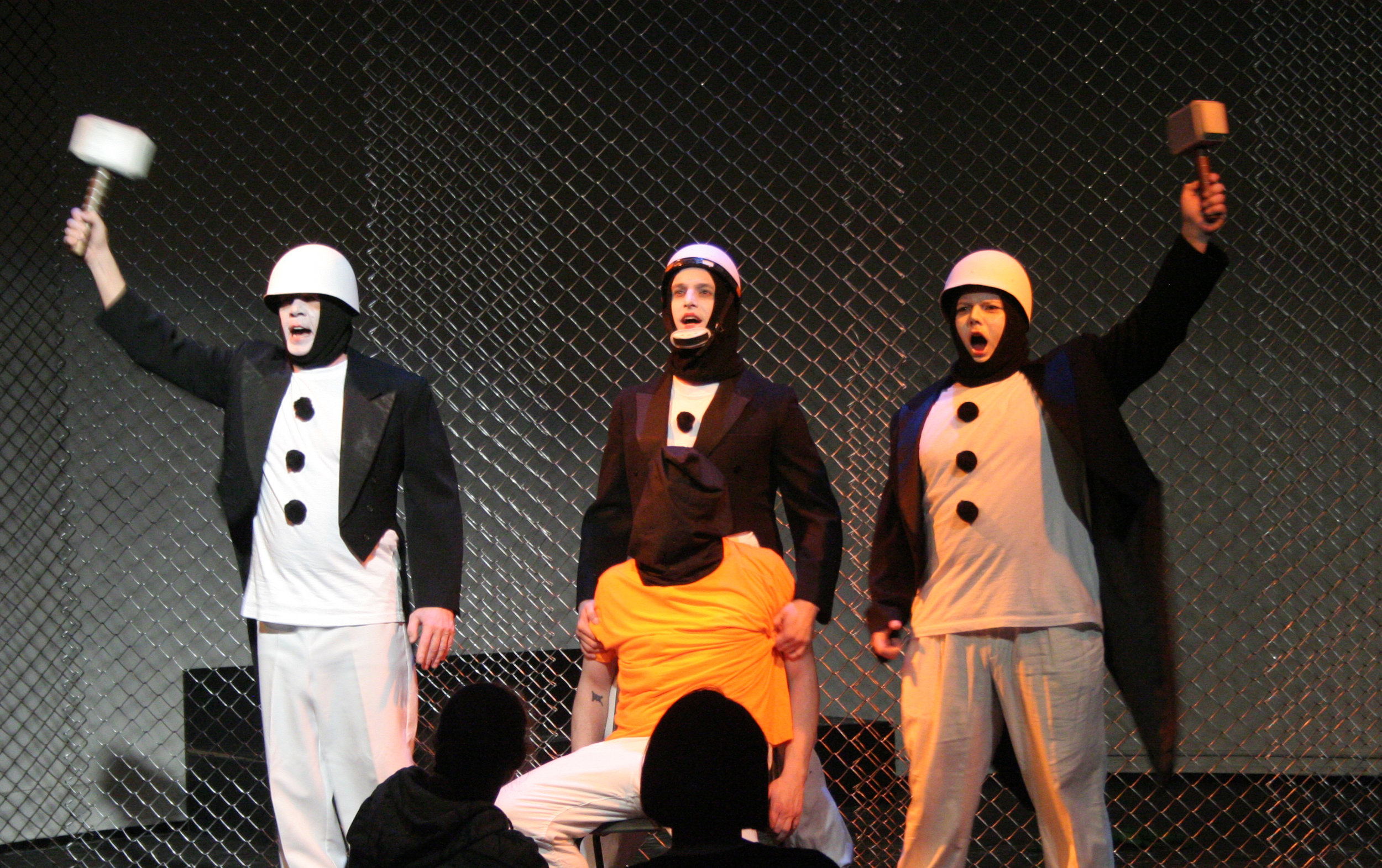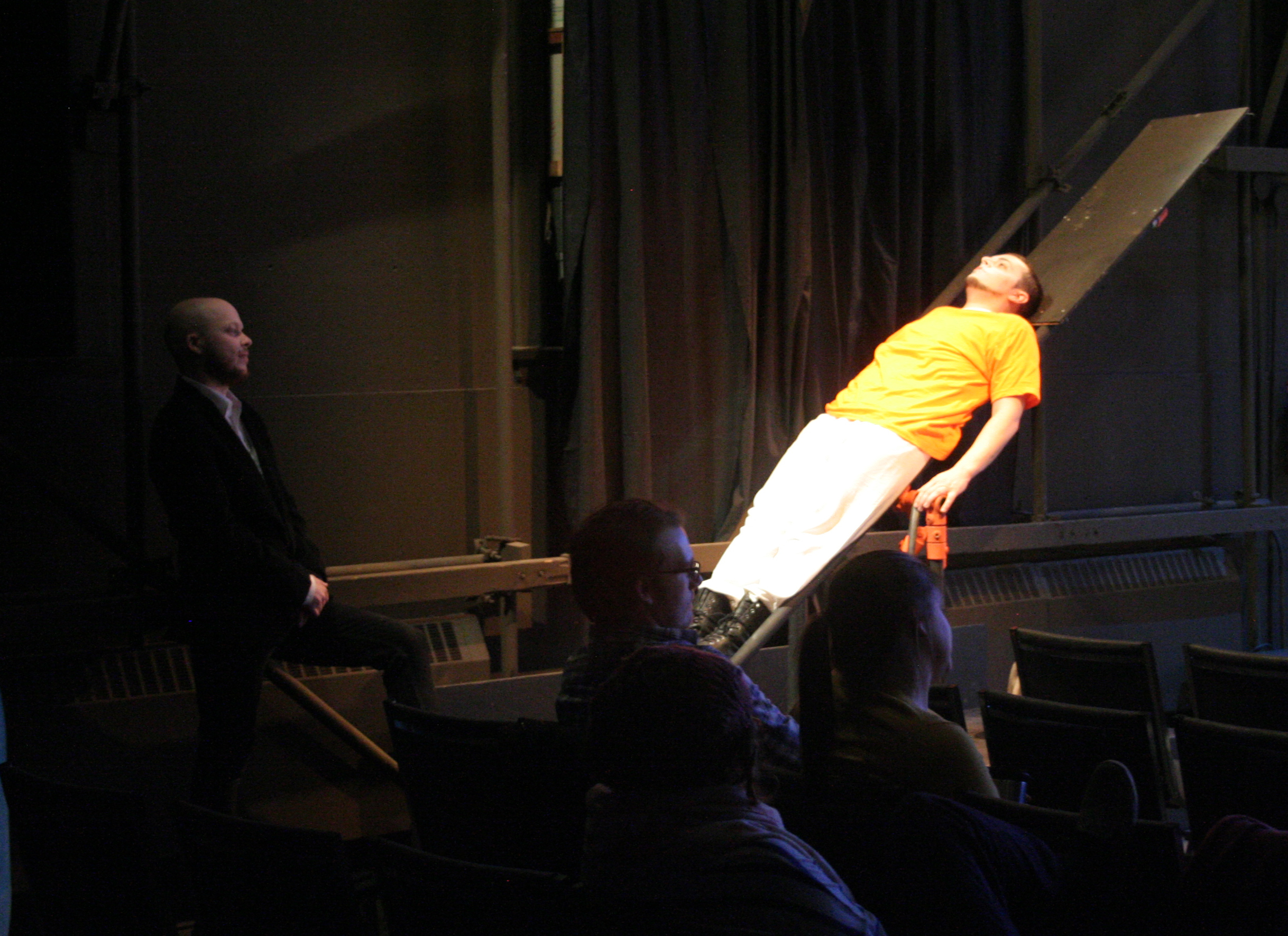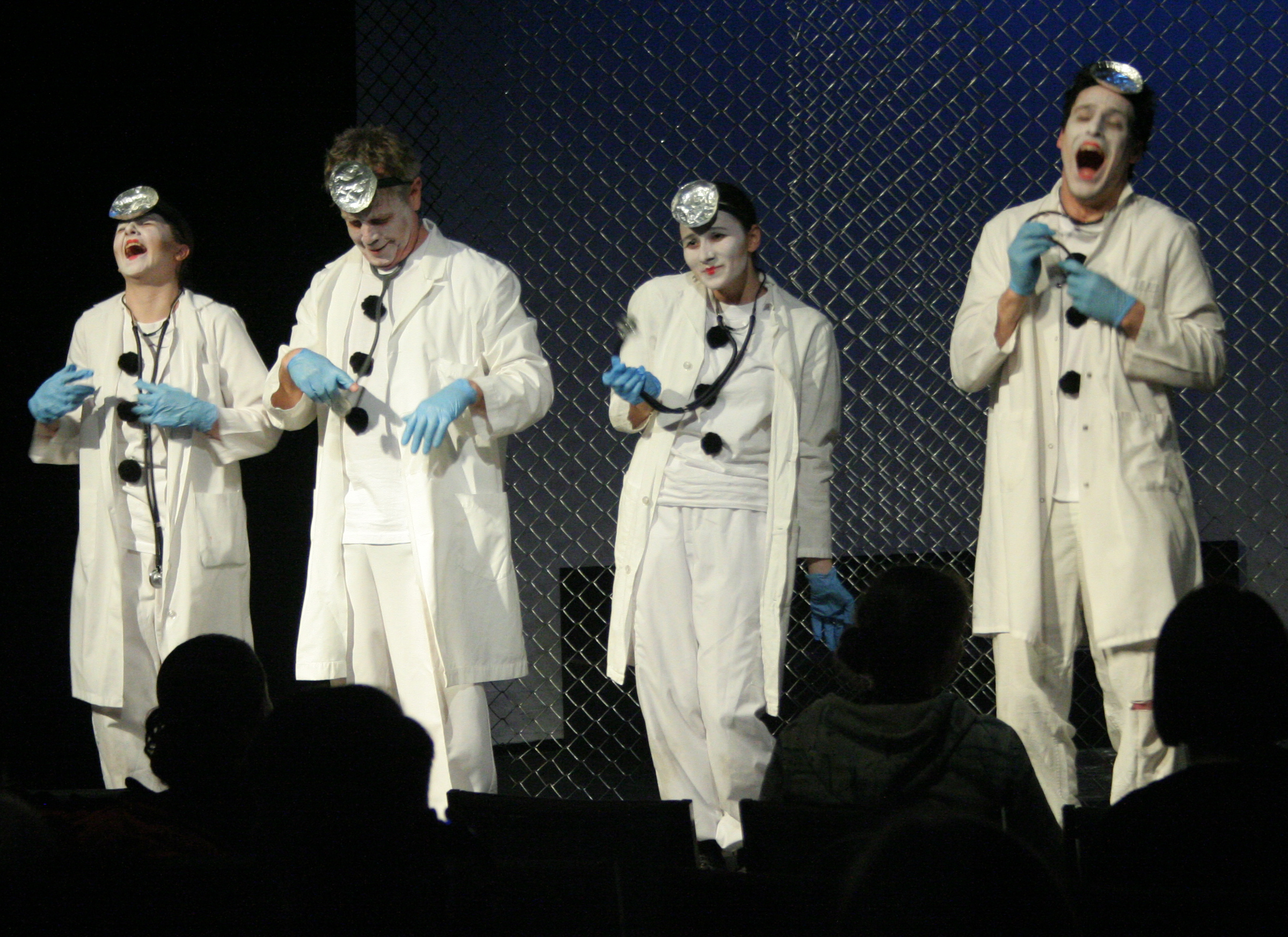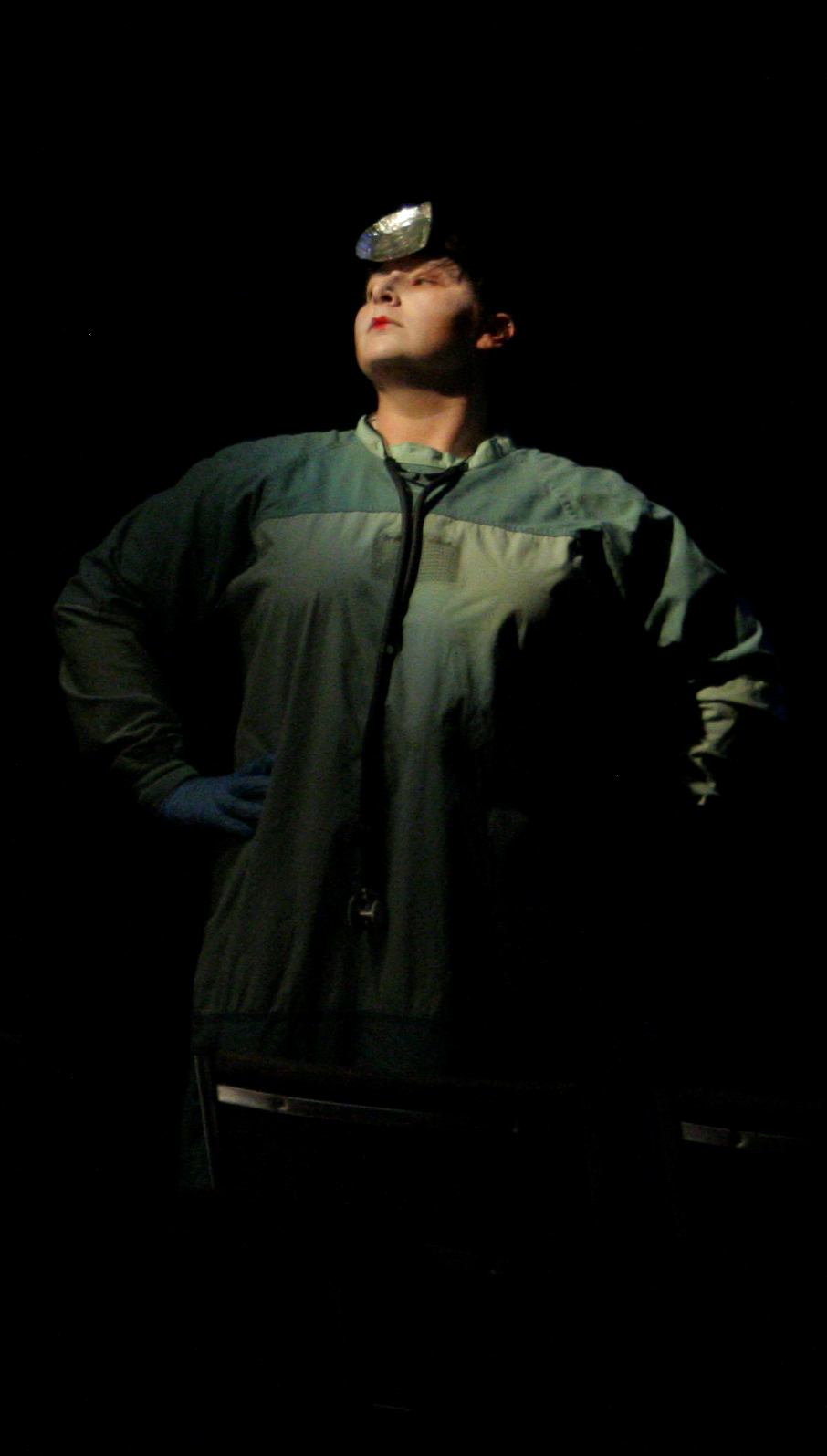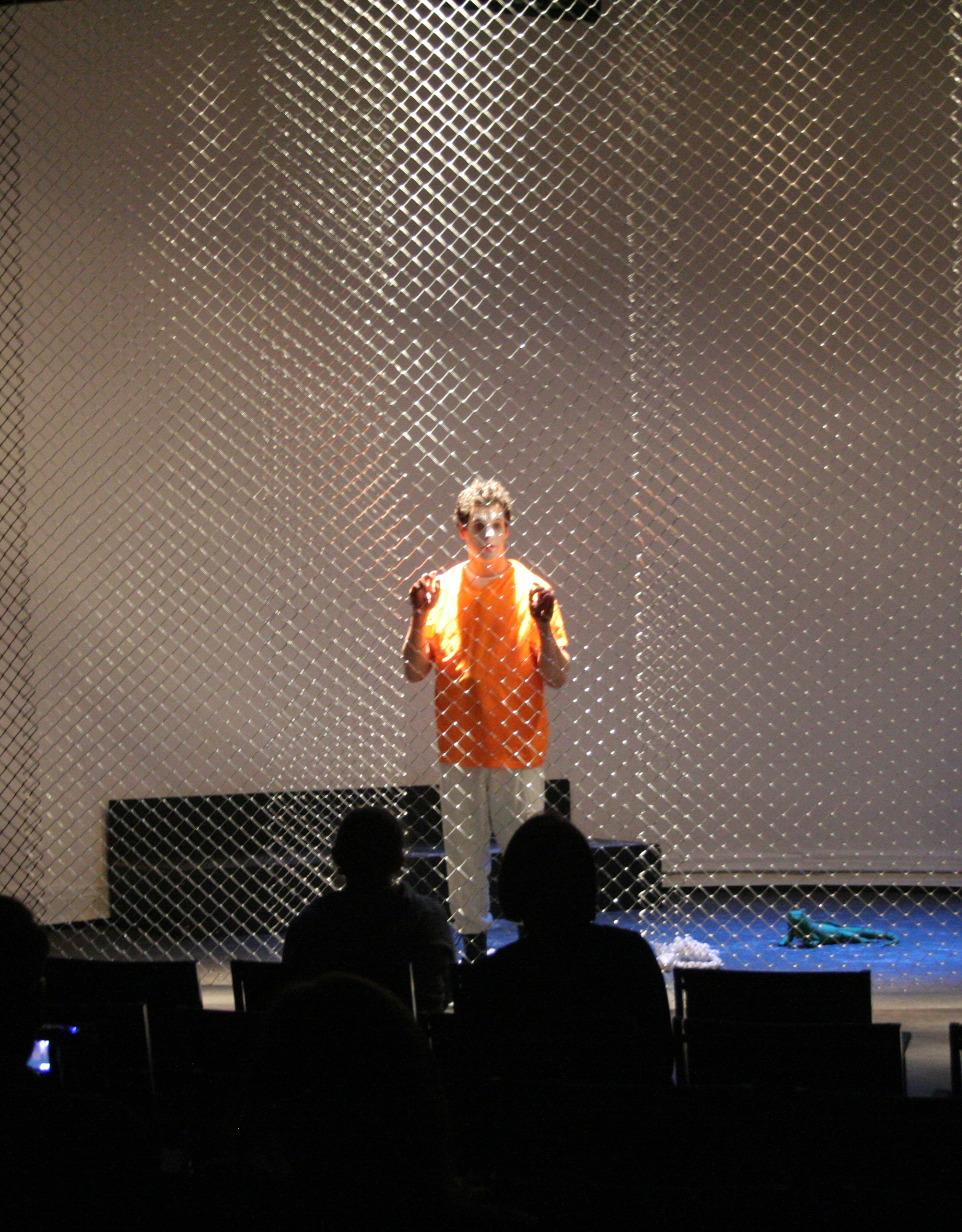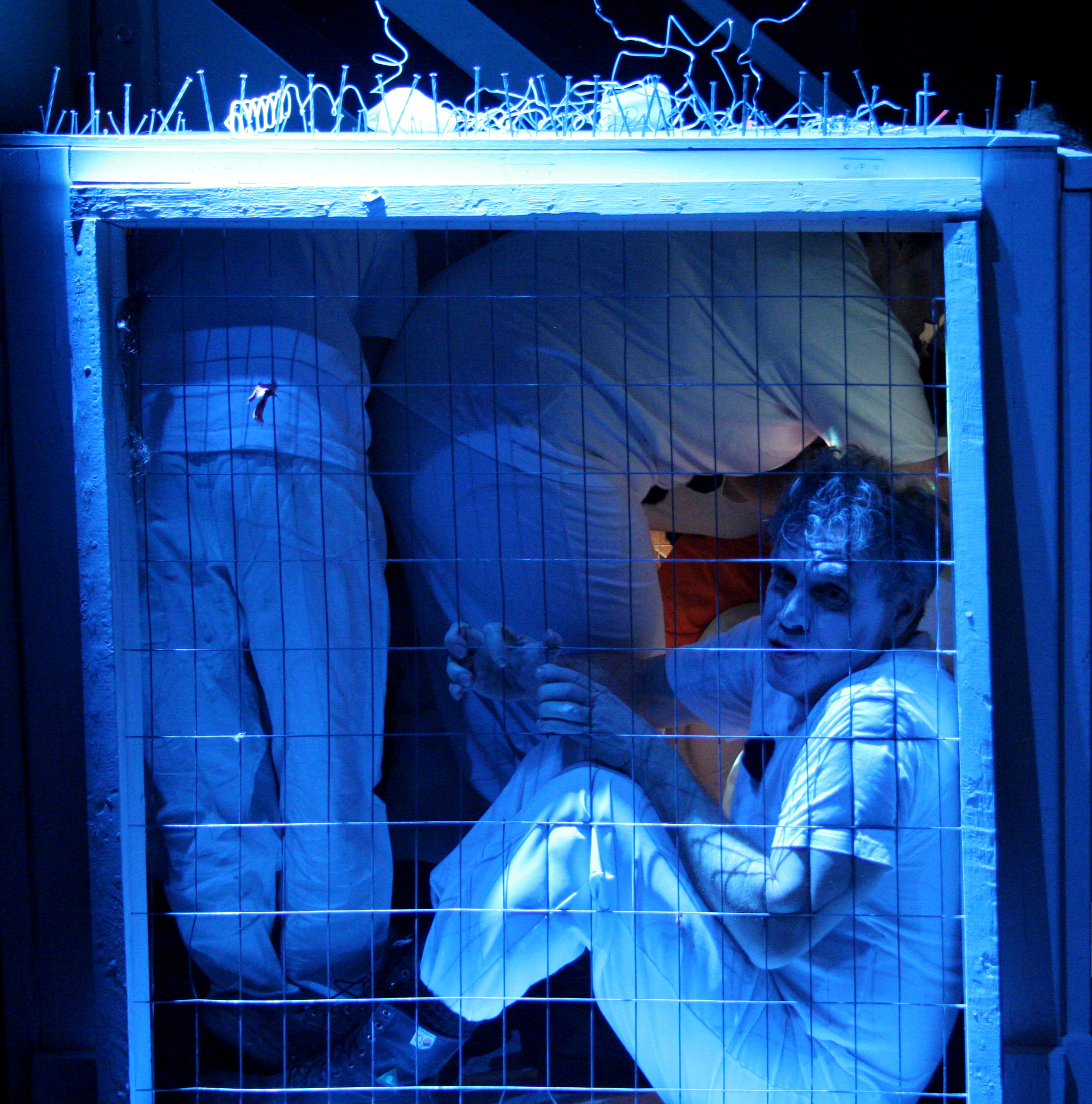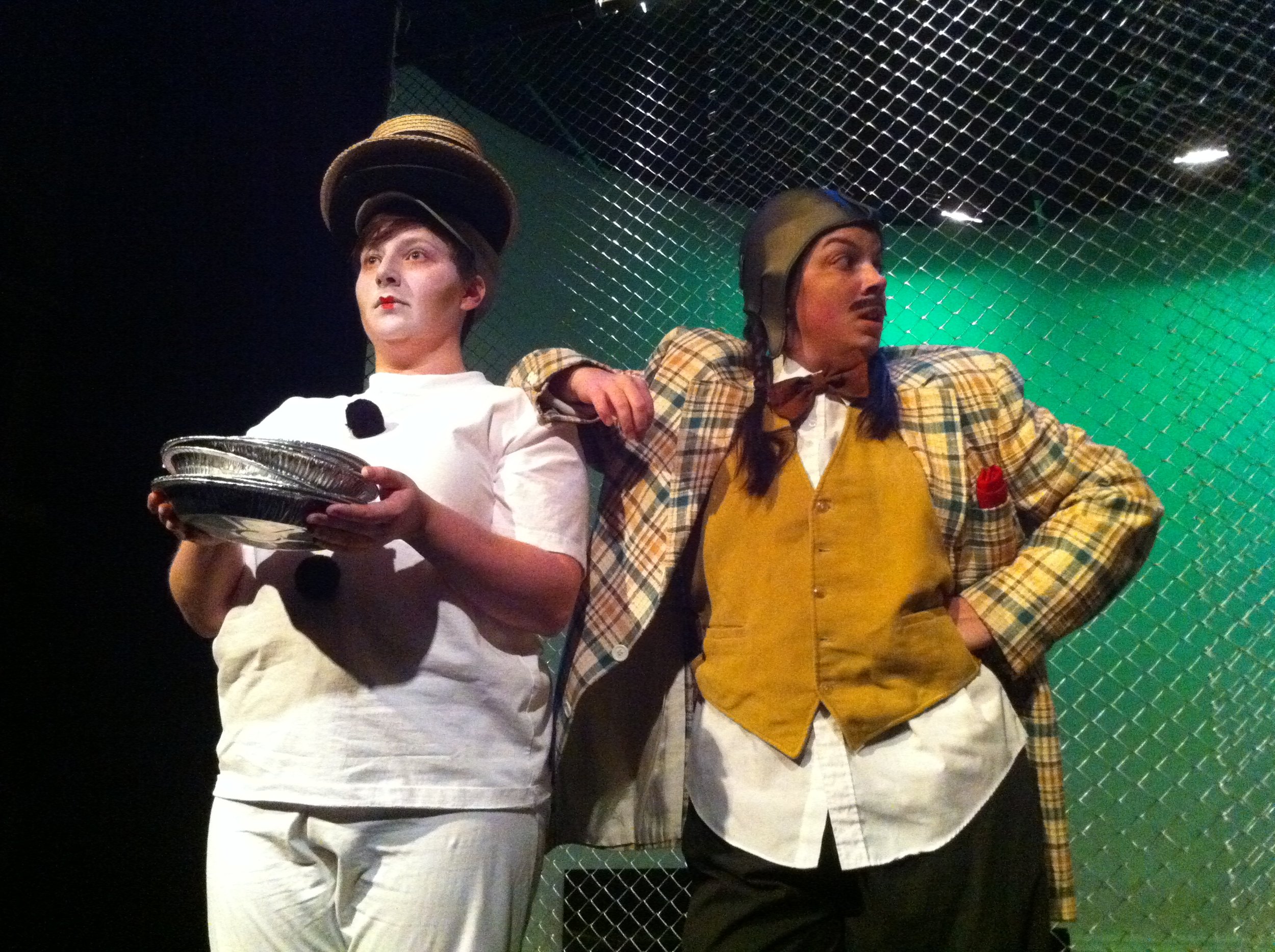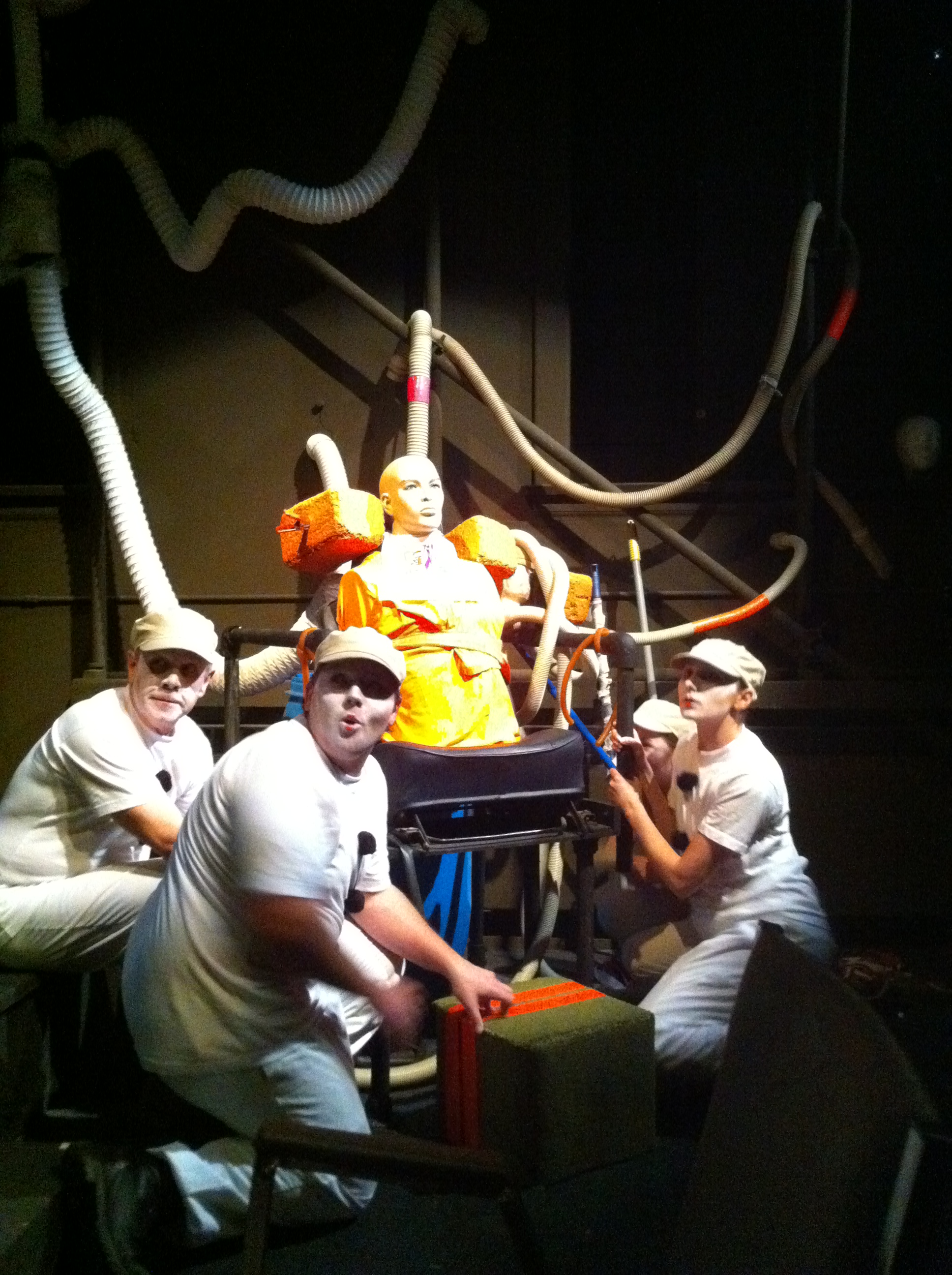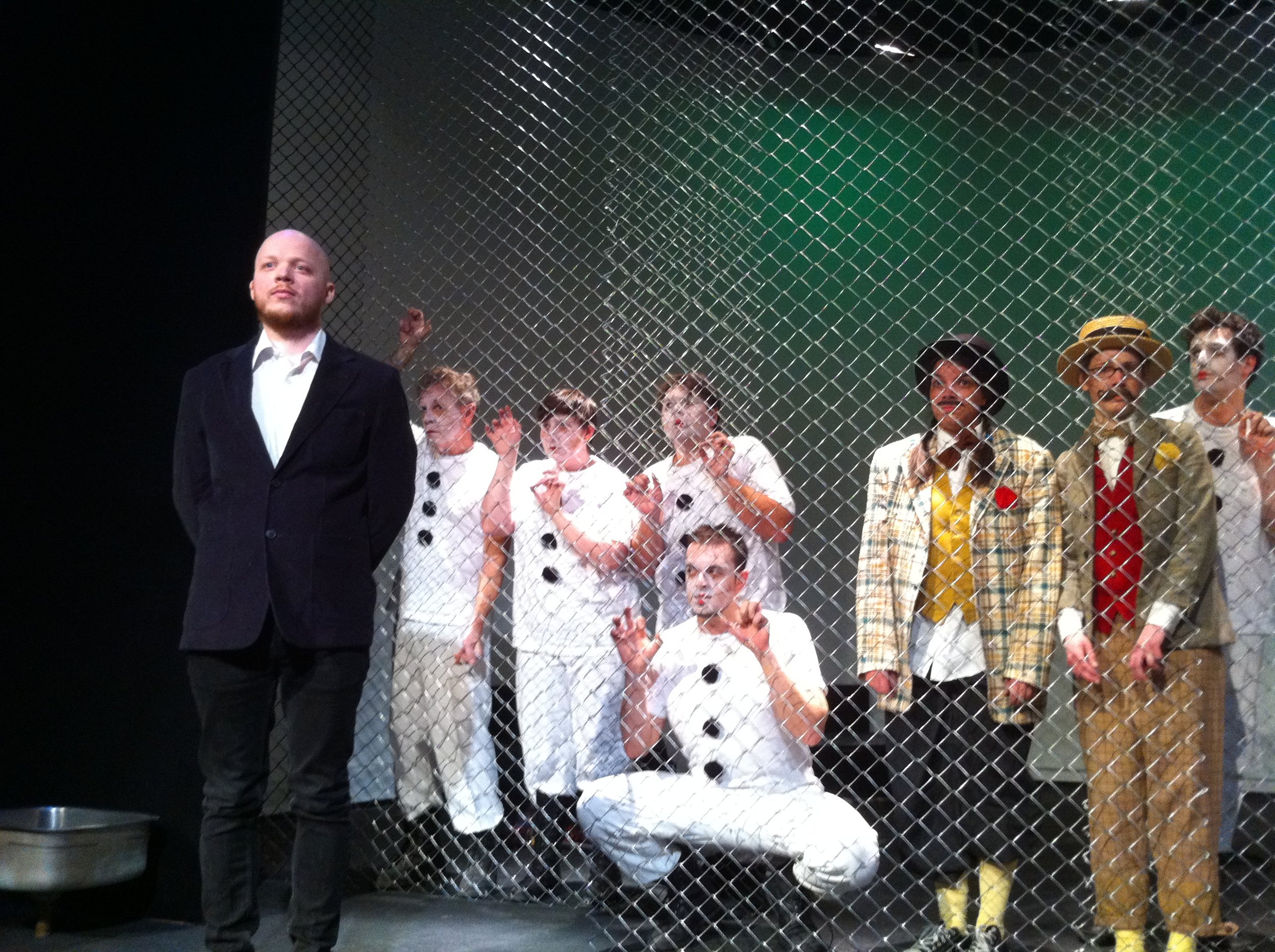Death Clowns in Guantánamo Bay
Written by Matt Jones and Natalia Esling
Read the ‘death clowns’ programme
Overview
The clown is so close to death that only a knife-edge separates him from it, and sometimes he goes over the border, but he always returns again. -- Richard Payne
Death Clowns in Guantánamo Bay was a devised theatre production created by Matt Jones, Natalia Esling, Myrto Koumarianos, and Allison Leadley and staged at the Centre for Drama, Theatre and Performance Studies in 2013. The play intended to explore the conditions of detention at the US military base in Guantanamo Bay, Cuba. However, we were immediately faced with obstacles to knowing what went on there. Our own physical distance from the camp, military censorship, the inexpressibility of trauma, the unreliability of translation, and the challenge of understanding experience across cultural difference combined to make the task feel insurmountable. However, we were not entirely disconnected from the camp. As artists working in the Canadian state, we were connected through myriad networks of political alliances to the decisions that made this situation possible. Because of this, we felt impelled to “know.”
Inspired by the “memory-plays” of Tadeusz Kantor, we developed a technique called “Death Clowning” that did not aim to represent the truth about the camp, but rather to show how we felt looking into the camp from outside. We created a dreamscape from a collage of sounds, images, and objects drawn from our research into the camp and our own personal reactions to what we had discovered. The play attempted to stage the unknown—to evoke the problems of not knowing and the challenges of representing a place so heavily veiled by secrecy. We were concerned with the methods of representing inaccessible memories, the impact of our personal relationships to the material, and the readability in performance of what Julie Salverson describes as “the impossible bravery and willingness of the clown as an attitude of foolish witness.”
The clown, taking on human-like qualities, embodies the tenuous link between our own memories and the inaccessible memories of the detainees, enacting Mary Bryden’s conception of clowns as “embodiments not of reassurance and laughter but of tensions and insecurities.” With its exaggerated features, the clown makes a mockery of representation and opens the possibility for theatrical explorations that are open-ended, and that emphasize not so much the literal truth of political events but the way they come to haunt us.
To create the play, a group of 40 graduate students were organized into a cell structure around the Artistic Director Matt Jones and director Ashley Williamson. In addition to a Central Committee, we formed an Ubermarionnette Cell (comprising the actors), a Dramaturgy Cell that wrote the script, a Readymades Cell that designed and built torture machines, and a Hacker Cell that designed an app that allowed the audience to interact with the set and the torture machines before the show began. A Clown Minstrel Cell played original clown music before and during the play
